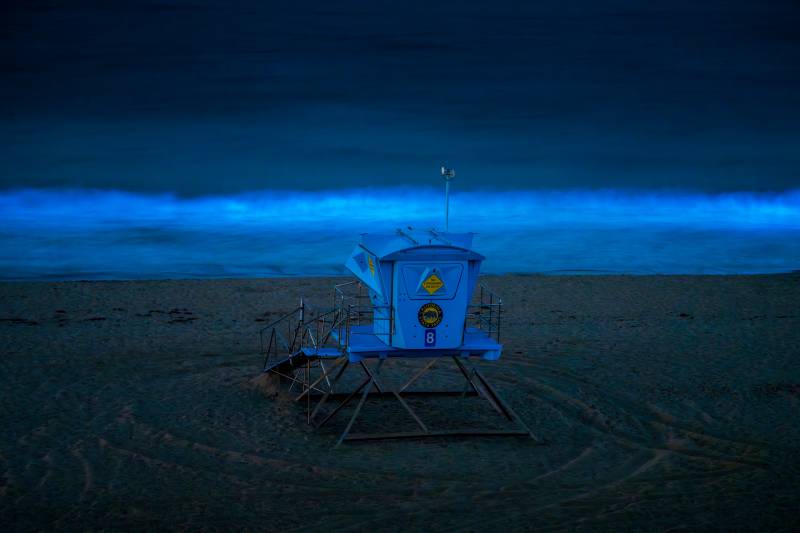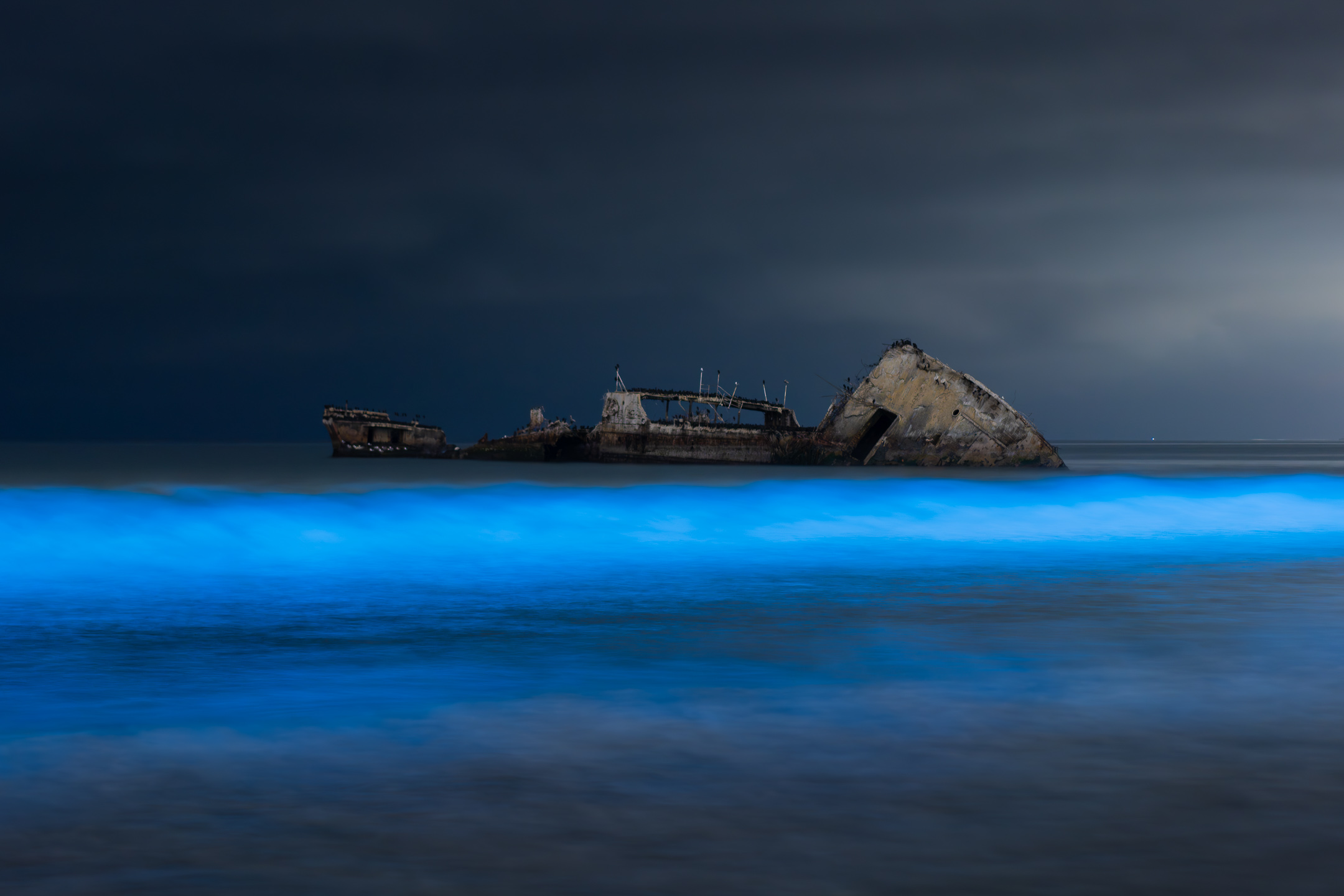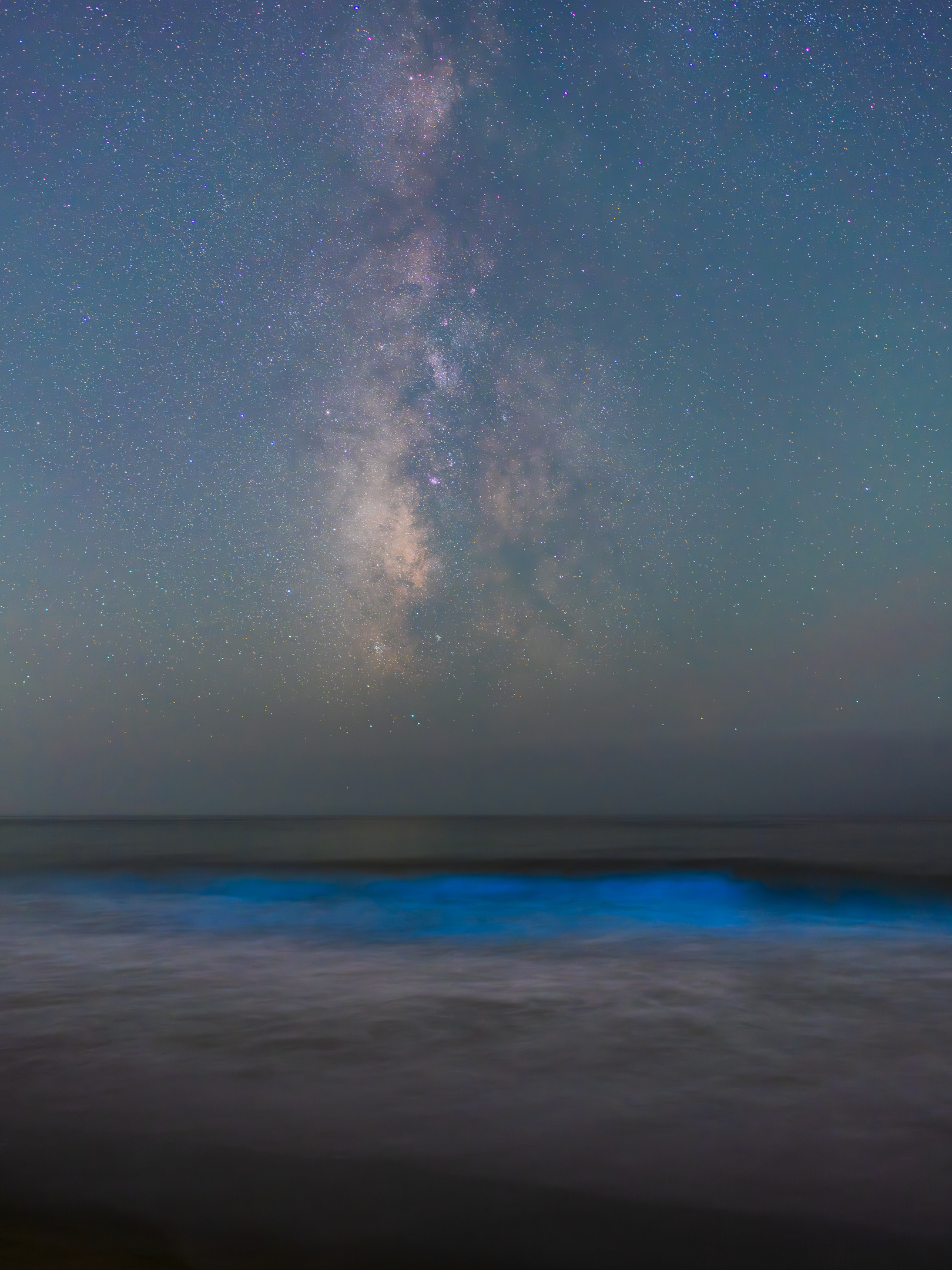A rainy or windy day followed by a calm day can kick off the sequence of events leading to a bloom. Rainy days will bring nutrients like phosphate and nitrate found in fertilizers used on land into the watershed and eventually into the sea. Wind will cause the mixing of deeper water, which has more nutrients, up to the surface, said Haddock.
Calm waters in a bay where the area is more enclosed and unaffected by the wind, could be a great spot to look for them after a windy or rainy day, said Haddock.
Tip #2: Look for red tides around surf zones
Shreenivasan Manievannan, a professional photographer in the Bay Area, captured a video of the bioluminescence in 2022 in Pacifica when he noticed the red tide event earlier in the day.
“I noticed a distinct change in [color in] the waves in the surf zone,” said Manievannan.
Tip #3: Track those dinoflagellates (or follow those who do)
You might also be able to track dinoflagellates on iNaturalist, a crowdsourced species-identification system.
Also, stay tuned to local aquariums like the Monterey Bay Aquarium and social media updates on bioluminescence events.
Tip #4: Consider the visibility
For the best visibility, catch the bioluminescence on a moonless night or a night during a new moon.
“The darker the night, the better,” said Haddock.
Where can I see bioluminescence around the Bay Area?
Haddock says that if the bioluminescence is very bright, you can see it really well on the shore or on the bluffs overlooking the shore.
But one of his best experiences seeing bioluminescence was on a rowboat in a bay.
“Every drip of water from the paddle would create this concentric ring of lights that went out,” he said. “It’s just amazing.”
The two most common spots to check out bioluminescence are Tomales Bay in Marin County and Moss Landing in Monterey Bay where you can take advantage of a number of bioluminescent tours organized by kayaking companies.
In Santa Cruz county, residents have spotted bioluminescence on the shores of Manresa State Beach in Aptos, Seacliff State Beach, Rio Del Mar State Beach, Shark Fin Cove in Davenport, Platforms Beach and Sumner Beach in Aptos. Big Sur near Bixby Bridge has been known to produce bioluminescence in 2018.
For folks who want to experience this event with others, Haddock advises checking out kayaking companies that offer bioluminescence tours. Bay Area kayak companies like Kayak Connection and Blue Waters Kayaking offer bioluminescence tours every year from June until around November.
What’s it like to go on one of these bioluminescence tours via kayak — especially if you’re already a science lover? In 2023, Bay Area scientist Nuur Shaikh, who majored in biology in college, accompanied almost 20 other friends on a bioluminescence tour in Moss Landing, Santa Cruz, where the tour guides brought them to the bioluminescent hot spots in Elkhorn Slough.
“The current was basically pulling us toward the hot spots. We didn’t really have to row or anything,” she said.
On the way to the bioluminescent hot spots, Shaikh and her group passed by patches of algae. “So you could pick up a piece of algae and you can kind of see the [bioluminescent] plankton that’s stuck on those strands,” she said.
When she twirled her fingers in the water, she said the water would light up for a microsecond, making it look like glitter.
“They kind of sparkle a little,” she said. “They look like fairy dust.”
This story was originally published on August 10, 2023.
Tell us: What else do you need information about?
At KQED News, we know that it can sometimes be hard to track down the answers to navigate life in the Bay Area in 2024. We’ve published clear, practical explainers and guides about COVID, how to cope with intense winter weather and how to exercise your right to protest safely.
So tell us: What do you need to know more about? Tell us, and you could see your question answered online or on social media. What you submit will make our reporting stronger, and help us decide what to cover here on our site, and on KQED Public Radio, too.



